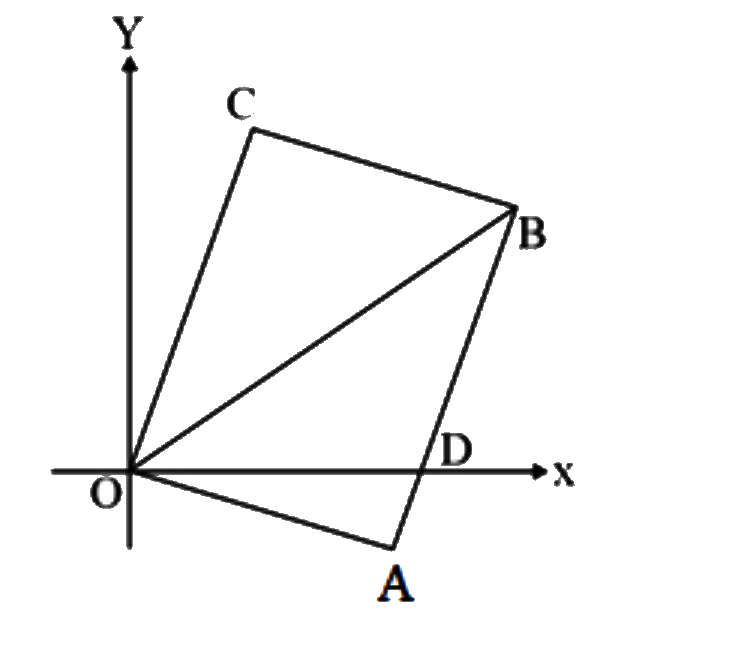ABCDEF is a regular hexagon , with the sides AB, AC, AD, AE and AF representing vectors 1 unit , 2 units , 3 units , 4 units and 5 units respetively . Find their resultant ?
To find the resultant of the vectors AB, AC, AD, AE, and AF in a regular hexagon ABCDEF, we can follow these steps:
Step 1: Understand the Geometry of the Hexagon
A regular hexagon has equal sides and angles. The vertices are labeled as A, B, C, D, E, and F. We can place the hexagon in a coordinate system for easier calculation.
Step 2: Assign Coordinates to the Vertices
We can assign coordinates to the vertices of the hexagon:
- A (0, 0)
- B (1, 0) (1 unit to the right)
- C (0.5, √3/2) (2 units at 60 degrees)
- D (-0.5, √3/2) (3 units at 120 degrees)
- E (-1, 0) (4 units at 180 degrees)
- F (-0.5, -√3/2) (5 units at 240 degrees)
Step 3: Define the Vectors
The vectors originating from point A are:
- AB = (1, 0) (1 unit)
- AC = (0.5, √3/2) (2 units)
- AD = (-0.5, √3/2) (3 units)
- AE = (-1, 0) (4 units)
- AF = (-0.5, -√3/2) (5 units)
Step 4: Sum the Vectors
To find the resultant vector R, we need to sum all the vectors:
R=AB+AC+AD+AE+AF
Calculating the components:
- X-components:
- AB: 1
- AC: 0.5
- AD: -0.5
- AE: -1
- AF: -0.5
- Total X = 1+0.5−0.5−1−0.5=−1.5
- Y-components:
- AB: 0
- AC: √3/2
- AD: √3/2
- AE: 0
- AF: -√3/2
- Total Y = 0+√32+√32+0−√32=√32
Step 5: Resultant Vector
Now we can express the resultant vector R:
R=(−1.5,√32)
Step 6: Magnitude of the Resultant Vector
To find the magnitude of the resultant vector:
|R|=
⎷(−1.5)2+(√32)2
=√2.25+34
=√2.25+0.75
=√3
Final Result
The magnitude of the resultant vector is √3 units.
---
A regular hexagon has equal sides and angles. The vertices are labeled as A, B, C, D, E, and F. We can place the hexagon in a coordinate system for easier calculation.
We can assign coordinates to the vertices of the hexagon:
- A (0, 0)
- B (1, 0) (1 unit to the right)
- C (0.5, √3/2) (2 units at 60 degrees)
- D (-0.5, √3/2) (3 units at 120 degrees)
- E (-1, 0) (4 units at 180 degrees)
- F (-0.5, -√3/2) (5 units at 240 degrees)
The vectors originating from point A are:
- AB = (1, 0) (1 unit)
- AC = (0.5, √3/2) (2 units)
- AD = (-0.5, √3/2) (3 units)
- AE = (-1, 0) (4 units)
- AF = (-0.5, -√3/2) (5 units)
To find the resultant vector R, we need to sum all the vectors:
R=AB+AC+AD+AE+AF
- X-components:
- AB: 1
- AC: 0.5
- AD: -0.5
- AE: -1
- AF: -0.5
- Total X = 1+0.5−0.5−1−0.5=−1.5
- AB: 0
- AC: √3/2
- AD: √3/2
- AE: 0
- AF: -√3/2
- Total Y = 0+√32+√32+0−√32=√32
Now we can express the resultant vector R:
R=(−1.5,√32)
To find the magnitude of the resultant vector:
|R|=
⎷(−1.5)2+(√32)2
=√2.25+34
=√2.25+0.75
=√3
The magnitude of the resultant vector is √3 units.
Topper's Solved these Questions
- BOOK - ICSECHAPTER - VECTORS SCALARS ELEMENTARY CALCULUS EXERCISE - ADDITIONAL SOLVED PROBLEMS22videos
VECTORS SCALARS ELEMENTARY CALCULUS
- BOOK - ICSECHAPTER - VECTORS SCALARS ELEMENTARY CALCULUS EXERCISE - EXAMPLES26videos
VECTORS SCALARS ELEMENTARY CALCULUS
- BOOK - ICSECHAPTER - UNITSEXERCISE - MODULE 3 (SELECTED PROBLEMS)38videos
UNITS
- BOOK - ICSECHAPTER - WAVESEXERCISE - From Musical Sound10videos
WAVES
Similar Questions
Knowledge Check
- Question 1 - Select One
The magnitude of the vector 6ˆi−2ˆj+3ˆk is a) 5 units b) 7 units c) 11 units d) 1 unit
A5 unitsB7 unitsC11 unitsD1 unit
ABCDEF is a regular hexagon. Find the vector →AB+→AC+→AD+→AE+→AF in terms of the vector →AD
View SolutionAB is a side of a regular hexagon ABCDEF and is of length a with A as the origin and AB and AE as the x-axis andy-axis respectively. Find the equation of lines AC,AF and BE
View SolutionAB is a side of a regular hexagon ABCDEF and is of length a with A as the origin and AB and AE as the x-axis andy-axis respectively. Find the equation of lines AC,AF and BE
View SolutionIf ABCDEF is a regular hexagon, prove that −−→AC+−−→AD+−−→EA+−−→FA=3−−→AB
View SolutionAB is a chord of x2+y2=4 and P(1, 1) trisects AB. Then the length of the chord AB is (a) 1.5 units (c) 2.5 units (b) 2 units (d) 3 units
View SolutionThe distance of the point (4,5,6) from the XZ plane is (a)2 units (b)3 units (c)4 units (d)5 units
View SolutionIn the figure shown, OABC is a rectangle with OA=3 units, OC = 4 units. If BD = 2.5 units, then the slope of the diagonal OB is equal to
 View Solution
View Solution

